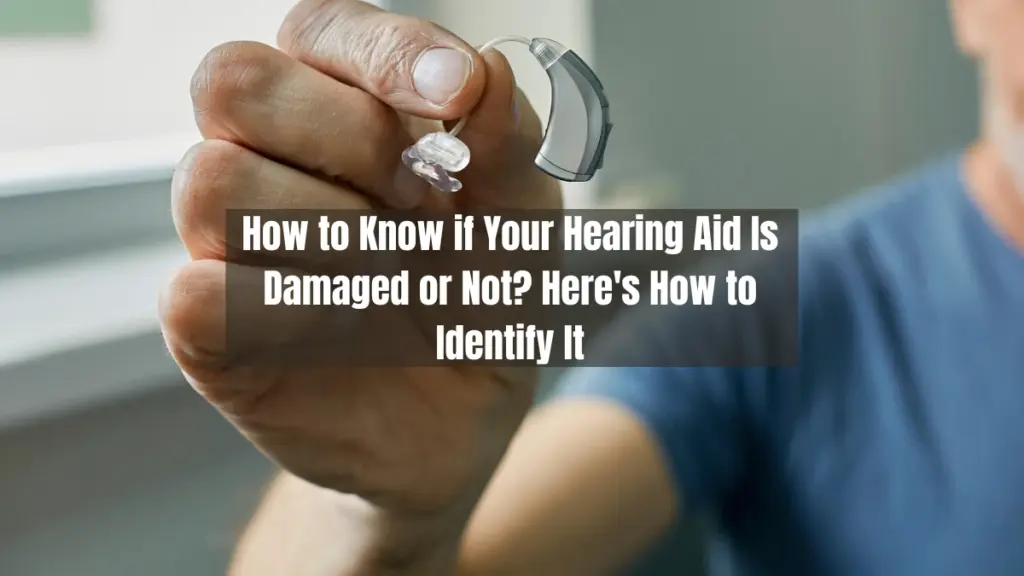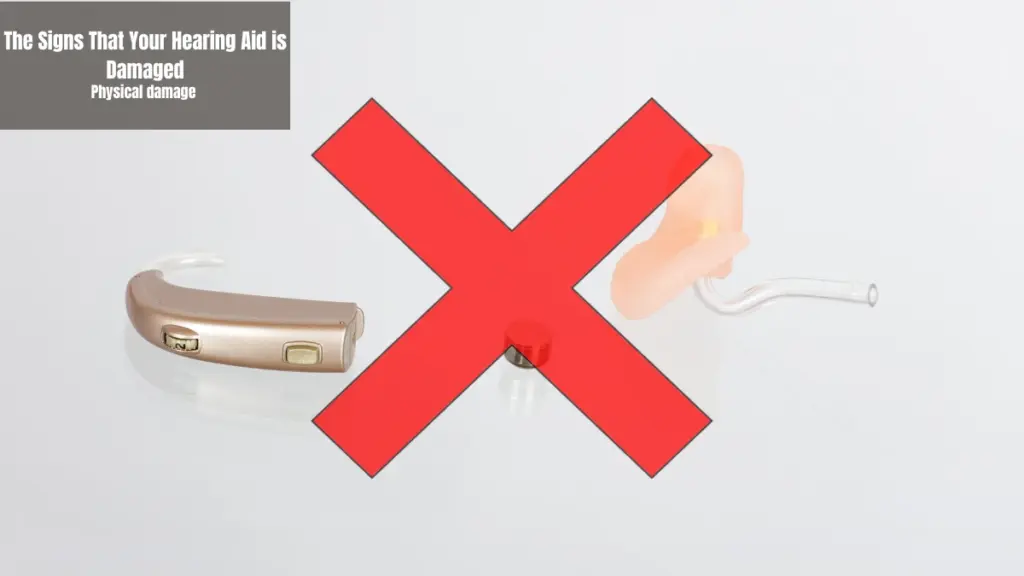It’s not just a device; for those with hearing loss, a hearing aid is a long-term investment. Therefore, in addition to knowing how to caring hearing aid, it’s also important to know the signs that your hearing aid is damaged.
Sometimes, even after proper care, issues may arise, such as decreased sound quality or a whistling sound. Does this mean your hearing aid is damaged?
Identifying the cause early on will help you address the issue before it worsens. This article will inform you about the signs of hearing aid is damaged or not, so you can identify them. Let’s discuss them together.
The Signs That Your Hearing Aid is Damaged

There are several signs that your hearing aid is damaged. Here are some things you can identify:
Changes in volume and sound quality
The most obvious sign that your hearing aid is damaged is a change in volume and sound quality. Usually, the sound suddenly becomes louder or softer, the sound quality deteriorates, the sound is muffled, or there is distortion.
If you experience these changes, there may be a problem with the microphone, amplifier, or receiver. You can check for damaged components or accumulated dirt that needs to be cleaned.
If the problem persists after you have cleaned it yourself, it may be best to take your hearing aid to an audiologist. That way, your device will be thoroughly cleaned or the internal components repaired.
Whistling or feedback

Whistling or feedback indicates two factors: first, there is dirt in your ear, or second, there is a problem with the hearing aid. You can try cleaning your ears first. If the whistling continues, then there is indeed a problem with your device.
This is often caused by loose components, misaligned channels, or debris blocking the device. This issue cannot be resolved on your own; you must bring the hearing aid to an audiologist for inspection and repair by a qualified technician.
Difficulty operating the controls
It’s not just about sound; signs that your hearing aid is damaged may start with difficulty operating the controls. If you have trouble operating the volume control on the device, you can try switching to the app to control it from there.
If you also cannot operate the controls from the app, you need to take it to an audiologist immediately to have it checked and repaired.
Physical damage

Physical damage is the most common cause of hearing aid malfunction. If your device accidentally falls or is hit by something, immediately check for physical damage such as scratches, cracks, breaks, or moisture damage.
If this occurs, it will certainly affect the device’s performance. You should take it to an audiologist for repair before the damage worsens if you continue to use it.
The device is not working
A hearing aid that is not working or has “died” may cause you to panic and think that it is broken. However, don’t be too hasty, as the problem may not be serious. You can try removing the battery and replacing it with a new one.
In addition, you can check the thin tube, which may be blocked or clogged with buildup that will block the flow of sound. You can try replacing the tube to solve the problem. If you have checked the power switch, replaced the battery, and there is no problem with the tube, then you should follow up by taking it to an audiologist.
These are some things you can identify to determine whether your hearing aid is damaged or not. By identifying the problem early on, you can handle it yourself before taking it to an audiologist for repair.
At least by handling it yourself, you won’t waste time and money on repairs. Before any of the above issues occur, it’s advisable to perform regular maintenance on your hearing aid. By taking good care of it, hopefully, your device won’t experience any damage.


